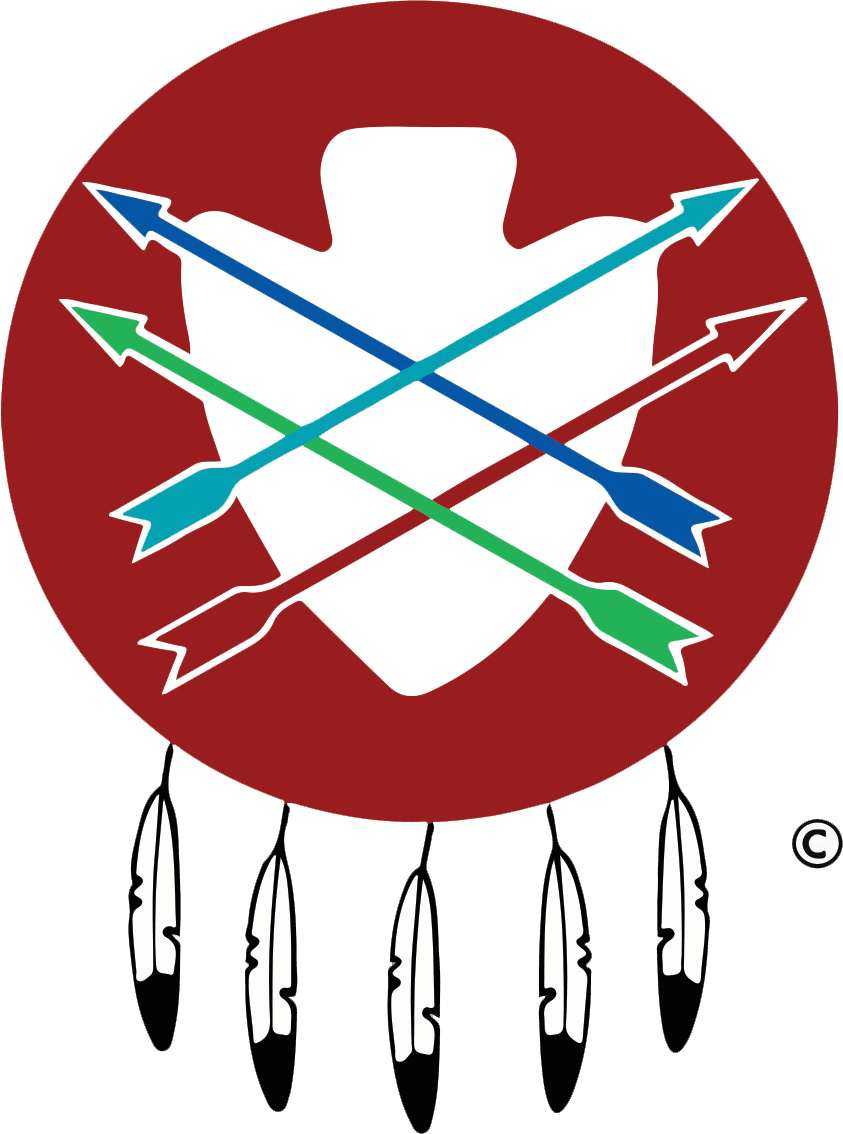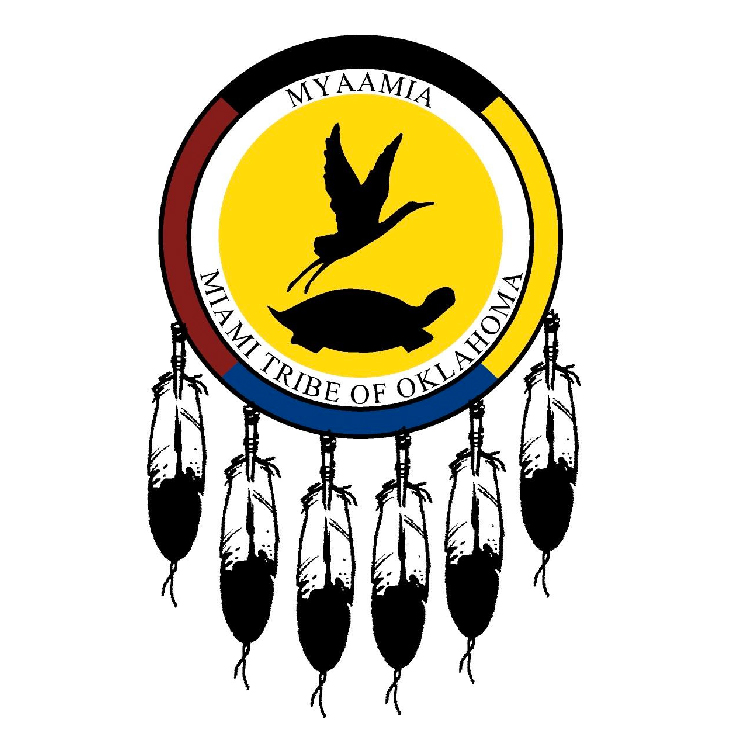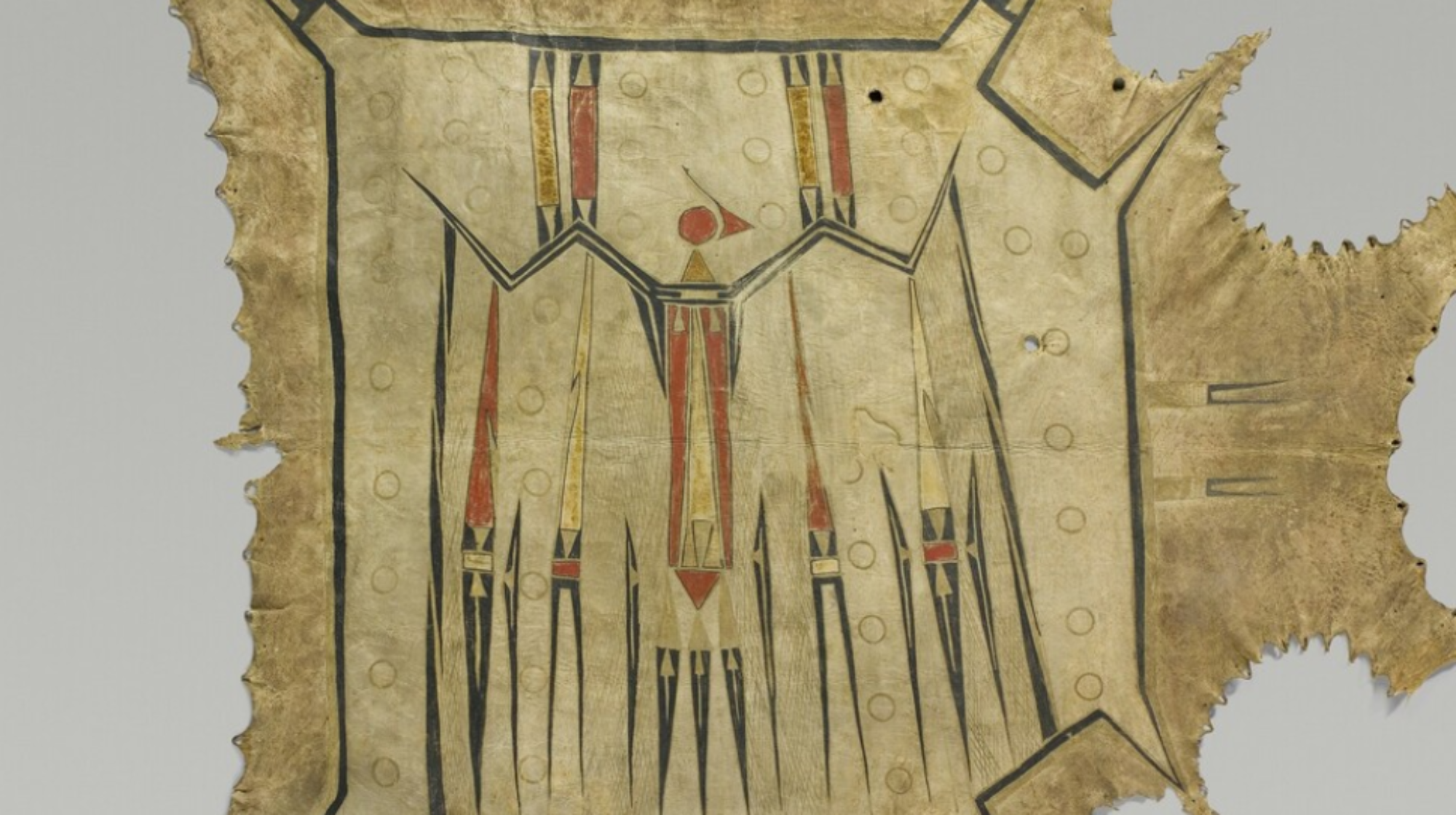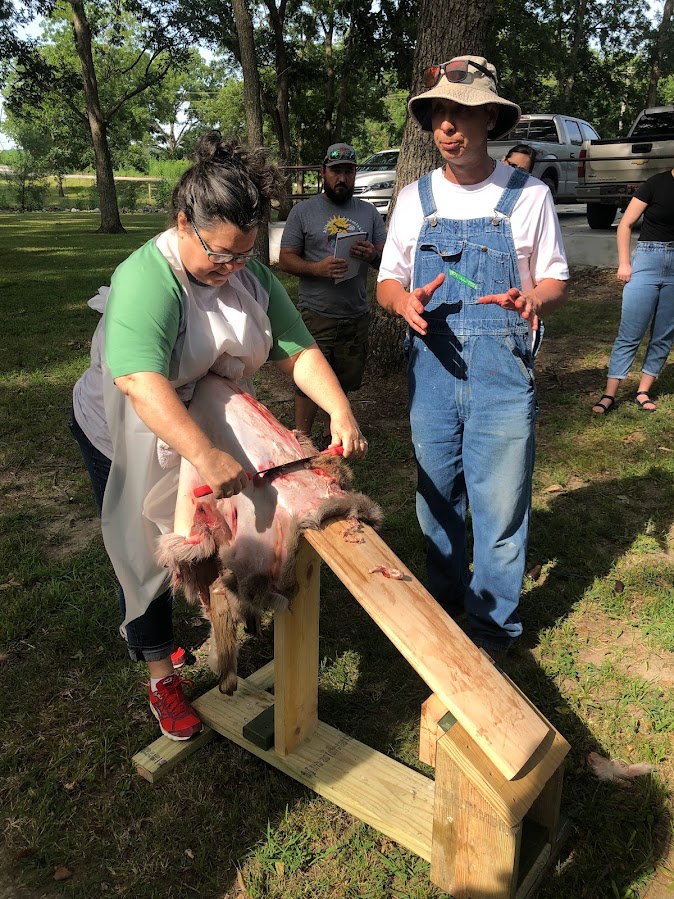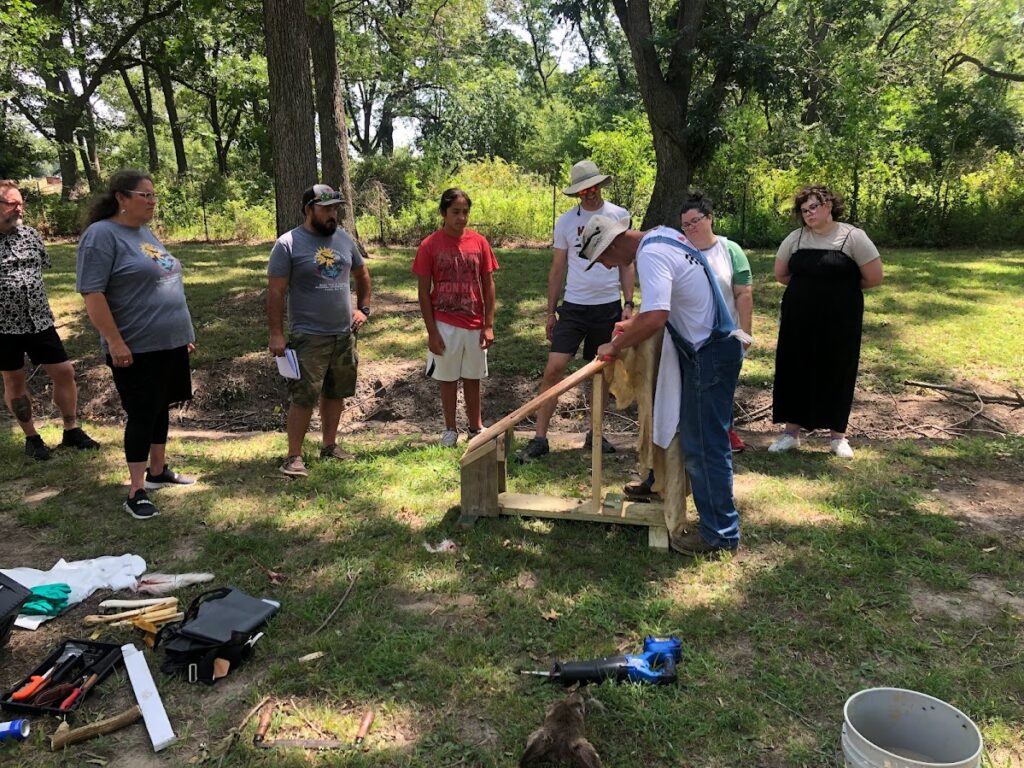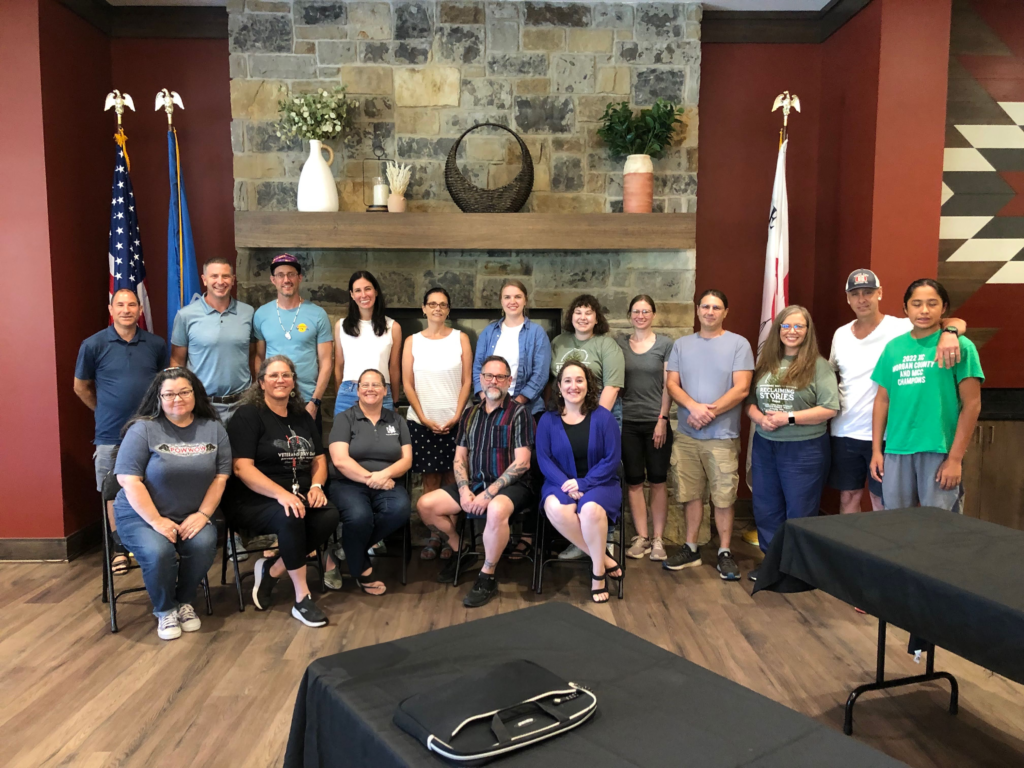Welcome to the Reclaiming Stories Project.
Reclaiming Stories is an interdisciplinary team of tribal cultural experts, artists, and academics who are dedicated to researching early Miami and Peoria culture. Our collaborative initiative is a tribal community-focused research venture that is centered on producing knowledge for both academic and community audiences on seventeenth century Illinois hide robes and (hi)stories. The collaborative aims to build on and extend an extraordinary process of cultural restoration among these Indigenous communities over the past generation with a specific focus on art history and practice. Since its origin in 2020, the Reclaiming Stories project has created an interdisciplinary conversation around the traditional practices of hide paintings (or minohsaya) in the history of the Peoria and Miami communities. The collaborative now aims to make a space and an occasion for an extensive reclaiming and revitalization of the meanings and techniques of hide painting and related art practices for communities today. This work will build on ongoing community achievements in language revitalization, ecological reawakening, and historical scholarship, as well as enduring artistic practices such as ribbonwork. Building knowledge across communities, across disciplines, and through methods of reciprocity and redistribution, the project aims to return old knowledge to the Miami and Peoria communities and allow us to create new practices.
The Reclaiming Stories project is funded by a grant from the Andrew W. Mellon Foundation through the Humanities Without Walls Consortium. In 2021, the collaborative team won a grant for an ambitious long-term (2022-2025) project. This project, “(Re)connecting Indigenous Painted Hides to Communities through Collaborative Conversations,” focuses on several collections of hide art (minohsaya) and related art works, most importantly a collection held by the Musée du quai Branly-Jacques Chirac in Paris. Guided by Indigenous Myaamia and Peewaalia methodologies, ethics of collaborative research, and a spirit of reciprocity and redistribution, the first phase of this project creates a significant opportunity for members of the Peewaalia and Myaamia communities—artists, community leaders, scholars and students—to reconnect with these objects and reclaim their meanings through a research trip. Seizing the opportunity created by a new interpretive initiative within the Musée du quai Branly, the project will result in a major exhibition for tribal and larger audiences on Miami and Peoria homelands, first at the Richard and Carole Cocks Art Museum (RCCAM) at Miami University and subsequently in Miami, OK.
